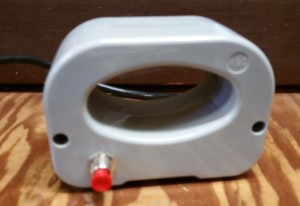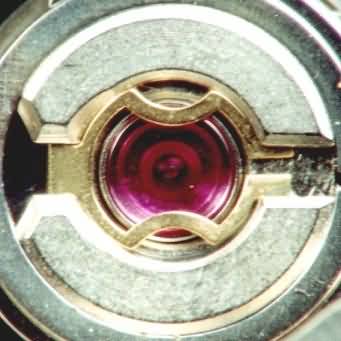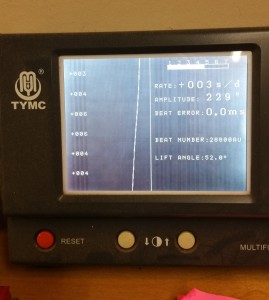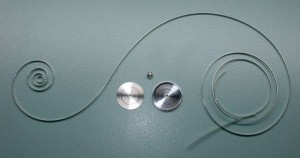Vintage Watch Care
Taking Care of Your Vintage watch
Interest in vintage timepieces has reached an all-time high. Some people become enamored by the watches’ stories; others seek the unique look and feel of a watch that has aged naturally over many decades. In this blog, I will go over some of the most commonly asked questions that I have heard from my watch customers.
Water Resistance, Magnetism and Shock Resistance
Many people don’t think twice about exposing their vintage watch to water. But the truth is that while many vintage watches were designed with water activities in mind, gasket failures can happen at any time — even on brand new watches.
Water-damaged parts such as a dial and hands might be easily replaced on a modern watch, but replacing these parts on a vintage watch can be very hard, if not impossible.
It’s also important to remember that gaskets are great at keeping out water droplets but struggle with keeping out water vapor. Walking from an air-conditioned office into the high heat and humidity exposes the watch to changes in pressure and temperature, making it easier for water molecules to sneak in, leading to some fog under the crystal. If this happens, Don’t panic – let the watch sit for a bit and the vapor should dissipate.
If your watch was produced in the late 60’s or early 70’s, think twice about wearing it on a rainy day. If your watch has a snap back or plastic crystal, be very careful about exposing it to any moisture at all. If you find yourself in a freak downpour, slide your watch into your pocket or briefcase.
Going back to my first rule of owning any watch — “Never get your watch wet.”’
Keep it as clean and dry as possible to help prolong it’s life.
Watch Demagnetizer

Shock Resistance
While the Incabloc and Kif shock absorbers in watch movements do a good job of fending off life’s unexpected blows, keep in mind that you are wearing a delicate precision mechanism on your wrist. There are limits as to what forms of punishment a watch can handle.
Splitting wood, golfing and tennis are activities for which a mechanical watch is not ideally suited. These occasions are perfect opportunities to strap on that quartz watch.
Magnetism can cause the coils of the delicate hairspring to “stick” together, shortening the spring and causing the watch to run very fast. The hairspring in most affordable mechanical watches remains vulnerable.
Televisions, speakers and iPads all contain magnets that can effect the precision of your watch if you keep them in close proximity.
Incabloc Balance Jewels and Shock Springs

Timekeeping
Lots of customers will call after an overhaul and say there vintage watch is not keeping time when compared to their smart phone. There’s a simple answer for that — no mechanical watch will ever, regardless of the maker or price tag, be as accurate as a digital clock.
Mechanical watches, by their very nature, are as accurate as their design allows them to be. Some manufacturers have focused on producing highly accurate movements while others prize strength and reliability. These variances in production, coupled with age, use, and service history can result in each watch having it’s own timekeeping tolerance.
You should expect your vintage timepiece to be accurate to a minute or two a day, older watches and those with simpler, less accurate movements may operate three to five minutes fast or slow. There is no way that any watchmaker can guarantee that an 80-year-old pocket watch can run to the same standards as when it was manufactured.
The same thing goes for a chronometer grade movement from the 1970’s. Some will still keep great time, others won’t. Each watch is going to perform a bit differently depending on how well it was maintained during its life, if it has gotten rusty, if it has ever been dropped, etc. Accuracy will depend on lots of factors that can’t be guaranteed after a simple overhaul.
Watch Timing Machine

Servicing
Many owners of vintage pieces think that sending their piece to the original manufacture is the best way to ensure proper servicing. The manufacturers are certainly capable of this work, they have a high standard for perfection. A faded dial is usually seen as “worn” and will often be replaced, along with crowns, bezels, hands and crystals. Manufacturers are also known to polish cases that have scratches or wear marks. For collectors of vintage watches, it is these features that makes watches desirable and valuable, meaning that a service by the watch’s manufacture can actually devalue the timepiece.
Is the Watch “All Original?”
The watch market has exploded recently with lots of dealers offering all sorts of vintage hardware. The latest trend to is the use of the word “original.”
The only sure way to know if all of the parts on your watch are original is if you are the only owner of the watch. As single-owner piece is increasingly rare. A trained eye can tell if parts are genuine, and “correct” to the watch, but claims of originality should be examined closely.
Genuine Omega Crown

Watch Winders
Watch winders have become a popular trend among owners of watches with self-winding or automatic movements, the idea being that you should keep the watch moving, whereby keeping the mainspring fully wound. I am not a big fan of this idea.
If you don’t plan to wear your watch every day, then I would just let it run down and when worn again, simply pick it up, wind it, set the date and start your day.
You really can’t hurt a watch by letting it sit without wearing it. If you are a collector and don’t wear all of your watches very often, it may be a good idea to wind them maybe once a month to keep things moving, but there is no need to keep them running constantly.
All Wound Up
That coiled mainspring will only provide power for a day or two if you don’t keep it wound. A hand wound watch is the purest form of the mechanical timepiece.
The mainspring is wound by turning the watch’s crown a few dozen times. While winding a watch is a simple process, there are a couple things to be aware of. First of all, wind the watch off of your wrist. Winding the watch while on your wrist will put the stem at an awkward angle and put stress on the delicate winding stem. You’ll know when it’s wound when you can’t turn the crown anymore. This isn’t like topping off your gas tank, so don’t try to give it a little extra. Stop winding when you first feel resistance.
Try to wind your watch once a day. A watch typically keeps best time when the mainspring is above half tension. Winding it up before you strap it on each morning is a good habit to form. An automatic or self winding watch only needs to be hand wound after it has stopped or not used for a few days. Wind it by the crown 20-25 turns, set it and then wear it and stay active 12-14 hours a day and you should be all set.
Watch Mainspring and Barrel

Setting the Date
Setting a watch is a pretty straightforward process, but it does have some dos and don’ts.
If you pick up a watch that isn’t running and you aren’t sure when it stopped, pull the crown all the way out and spin the hands until the date changes. You have now found midnight. Next, advance the time past 2 a.m. before pushing the crown in to quick set the date.
The date-changing mechanism starts to engage the gear train after 9 p.m. and normally disengages after 2 a.m. Quick Setting the date during this period can break off the delicate teeth of the mechanism. It’s also a good idea to set a watch forward, rather than running it backwards.
Still Ticking
A mechanical watch is still one of the most reliable, personal devices you can own. Keep it clean, keep it wound, keep it dry, and one day you’ll be that old guy with the cool vintage watch.
Taking care of it isn’t just to make sure it keeps telling time; it’s a show of respect for the tradition and craftsmanship that went into its making, a privileged relationship you have with one of the only machines that so intimately interacts with its owner. Take care of your watch, and your watch will take care of you.
Need expert help? Explore our watch repair services for vintage and antique timepieces.
